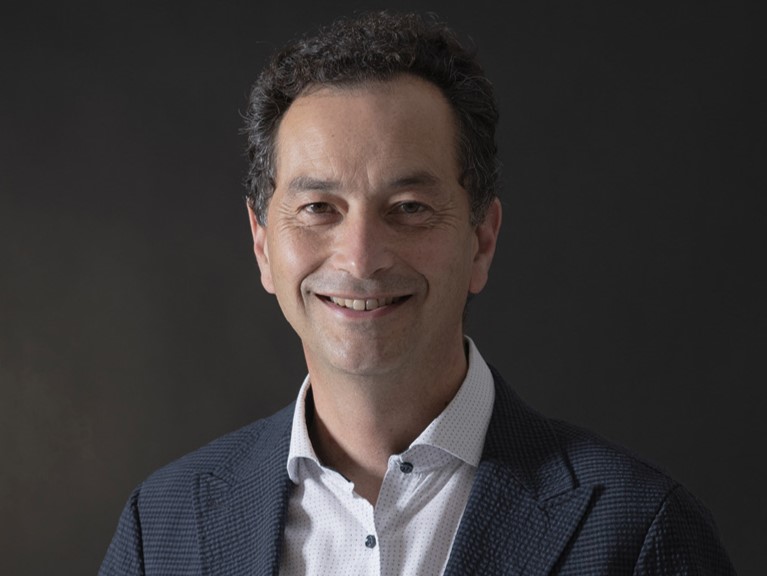For two or three years now, renewable hydrogen has been in the focus of policy-makers and industry. Nevertheless, we are still waiting for major projects. Why does it take so long?
We are talking about an entirely new ecosystem, from the generation of green hydrogen at a large scale, the transport and logistics, to the consumption at the end user. The new end users, before consuming hydrogen, also have to adjust their processes. The challenge is that to get to the final investment decisions of such projects, all stakeholders must be aligned and fully committed. European and national policymakers are forging new policies to shape the hydrogen market and related infrastructure. The delay getting such policies and regulations in place and the risk of over-regulation in Europe is slowing down, to some extent, the deployment of projects. Moreover, slow decisions on the provision of public funding and the low volumes of public funds compared to the European potential market for hydrogen make it difficult for most projects to complete their development.
What is the status of the Smartenergy projects?
We are very pleased that we have a substantial pipeline of hydrogen projects in active development with a focus on Iberia, covering various applications such as the cement and ceramic industry. We also have early-stage projects in development for products derived from hydrogen, namely eAmmonia and eFuels. These products are key in the mobility sector and are easier from a transportation and logistics point of view until hydrogen pipelines, and dedicated shipping, have been established. Several of our projects are in the process of public funding applications which, if obtained, would accelerate reaching a final investment decision. We are working on defining blueprints to accelerate project development, but each hydrogen project is currently unique and has its specific challenges. The most critical is still to get to firm commitments from the end consumer, which are vital for the bankability of the projects.
On the EU level, how do the REPowerEU plan and the discussion on additionality impact projects for solar-generated hydrogen?
It is a two-sided story. The energy and, in particular, the gas supply crisis caused by Russia’s unprovoked and unjustified attack on Ukraine has forced us to rethink the speed of the energy transition. The pace of change was already too slow given the speed of global climate change. The EU has recognized the integral importance of hydrogen in the future energy and feedstock system.
The REPower EU plan has anticipated higher demand for green hydrogen than was foreseen in the European Commission’s earlier Fit for 55 Package, calling for a share of renewable hydrogen used in industry of 50% by 2030 and adding a 75% target by 2035. It also doubled the share of renewable fuels of non-biological origin – essentially renewable hydrogen-based fuels – in the transport sector to 5.7% by 2030, up from 2.6% in the Fit for 55 Package. Making these targets binding through specific sub-targets, such as for aviation, would help to give clarity on the demand side, which is needed to create a hydrogen market and trigger investments. These plans translate into a drastic need for additional renewable energy capacity.
By estimation of Hydrogen Europe, REPowerEU adds another 80 GW to the earlier estimation of 167 GW renewable power plants needed for 10 million tons of hydrogen production by 2030 in Europe, the same amount shall be also imported totaling 20 million tons. That’s excellent news for the decarbonization of our economy, but the need for that large amount of additional renewable energy capacity can become a bottleneck for the successful construction of renewable-based hydrogen projects. I think most of us in the industry agree that we need this renewable energy capacity to be additional. The challenge, however, is that if the regulations on additionality in Europe become too complex before the hydrogen economy matures, we risk slowing down the momentum and losing our – at least perceived – leading position in Europe compared to the global hydrogen economy.
What favors specific PPAs for PV-generated hydrogen? What favors the co-location of big PV plants and electrolyzers?
The uncertainty on the PPAs for electrolyzer projects regarding regulations and future pricing gives a substantial advantage for co-located projects. However, it is much more challenging to find suitable land for such projects where renewables, electrolysers and off-take can be combined in proximity, with all requirements such as environmental impact, territory management rules, or water availability.
Is it possible to get financing for projects for solar-generated hydrogen? What is the view of potential investors on such projects, and which are their criteria?
Until recently, there has been concern about low load factors for electrolyzers powered by solar. In the meantime, with the energy crisis, the security of supply has reached a higher priority. Together with an increased understanding that low LCOH can be achieved with low loading factors, the likelihood of getting financing for solar-generated hydrogen projects has increased. In particular, hybrid projects with PV and wind can reach the lowest LCOH at loading factors as low as 50%.
The criteria for investment and bankability for solar-generated hydrogen projects are very similar to those previously experienced with PV projects 10 to 15 years ago. These criteria included low technical risk, experienced management, and sound project partners. The big difference mainly lies in the off-take. Hydrogen generation projects need to mitigate an additional risk compared to electricity projects, given that there is no market for trading green hydrogen so far. The good news, however, is that there are investors that have realized that there is a significant differentiation opportunity for them if they engage in an earlier stage in such projects, which includes some risk-taking. With a good project setup, these investors can unlock the potential of such projects and take the reward.
This content is protected by copyright and may not be reused. If you want to cooperate with us and would like to reuse some of our content, please contact: editors@pv-magazine.com.

